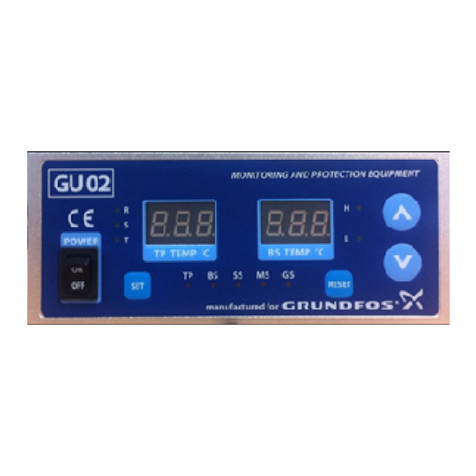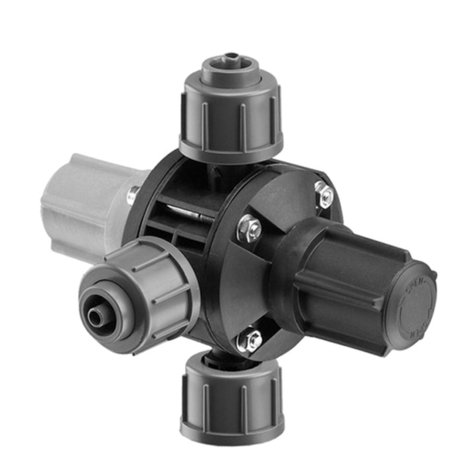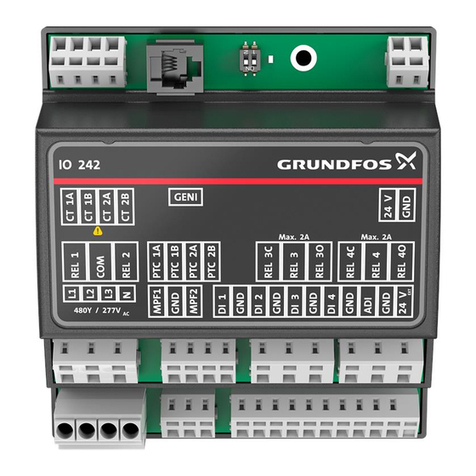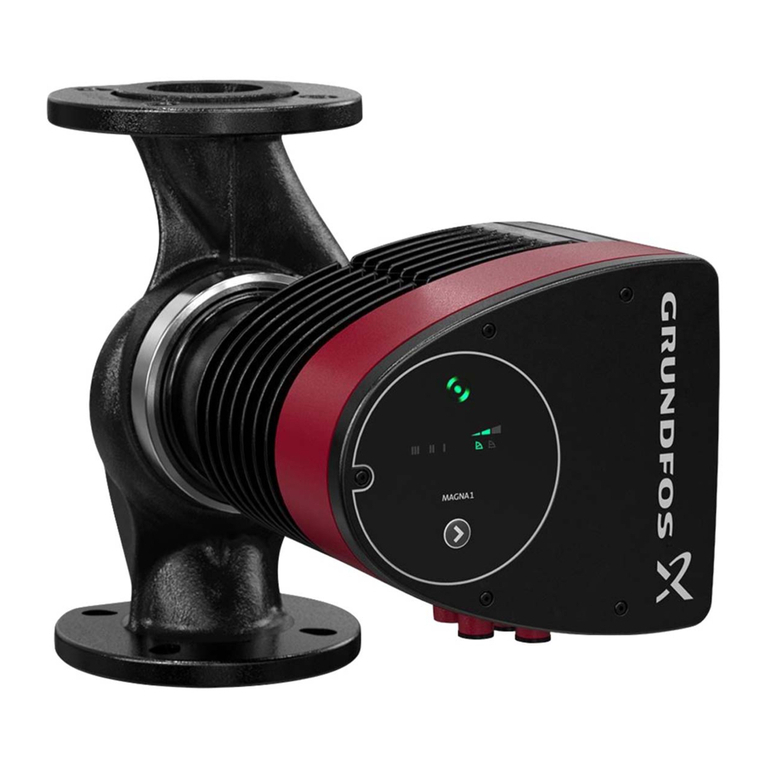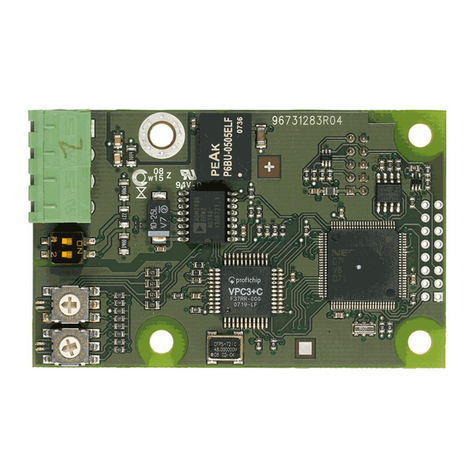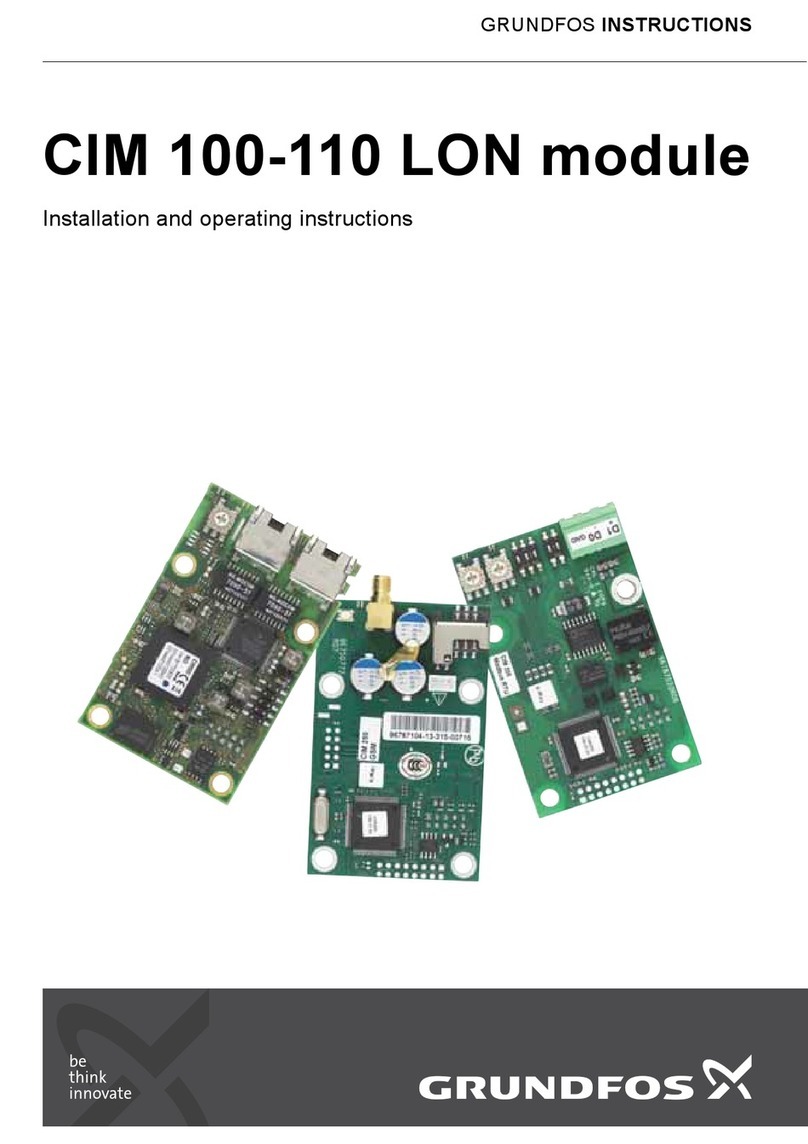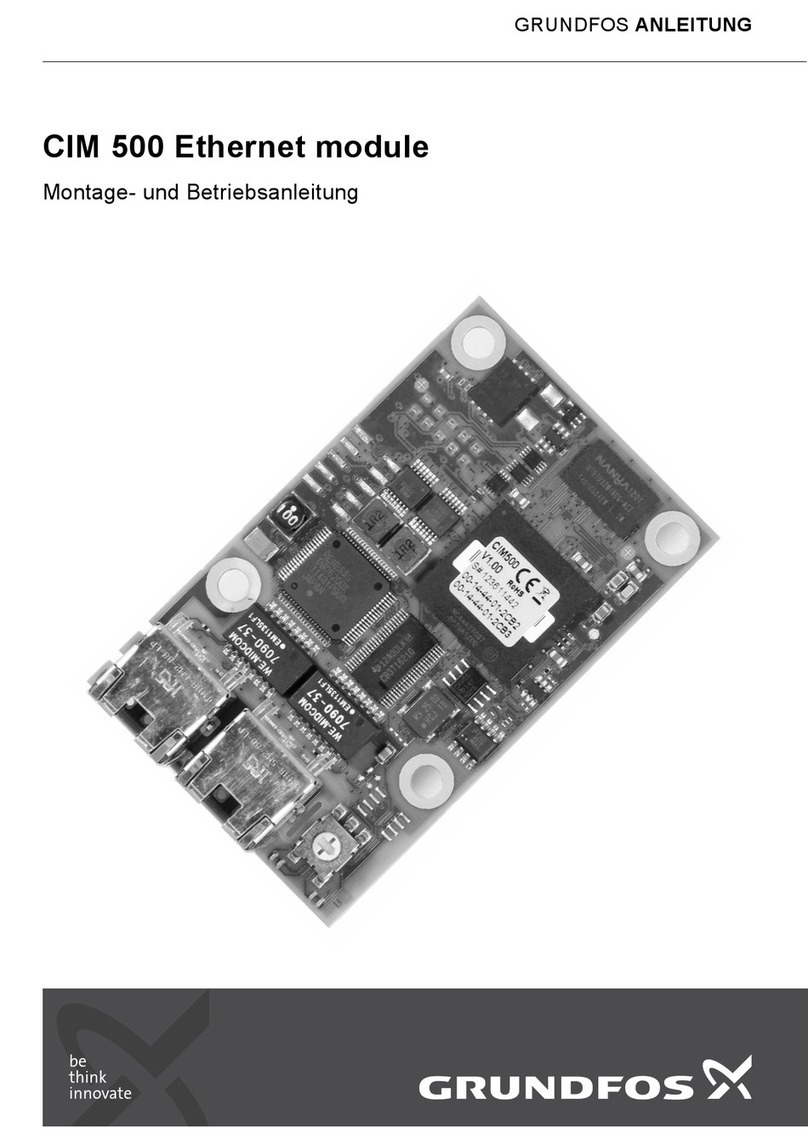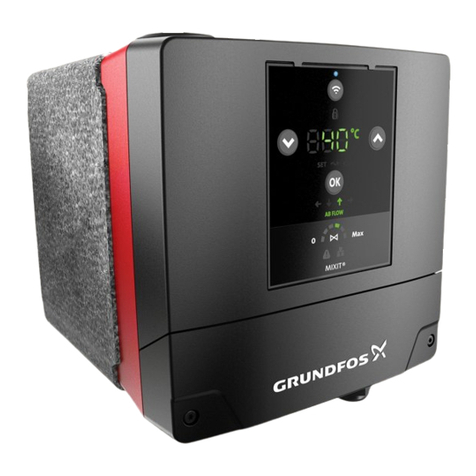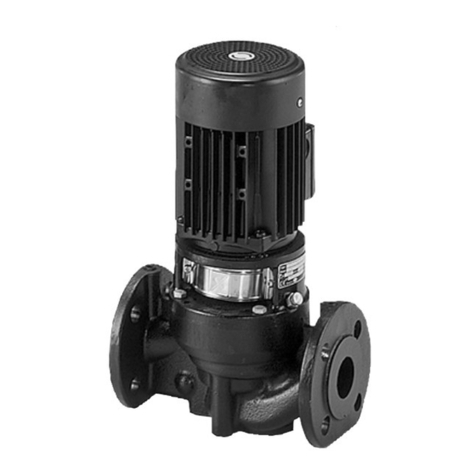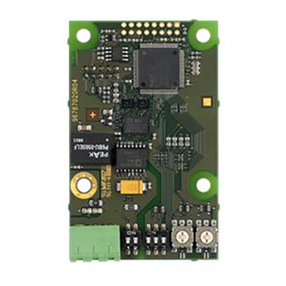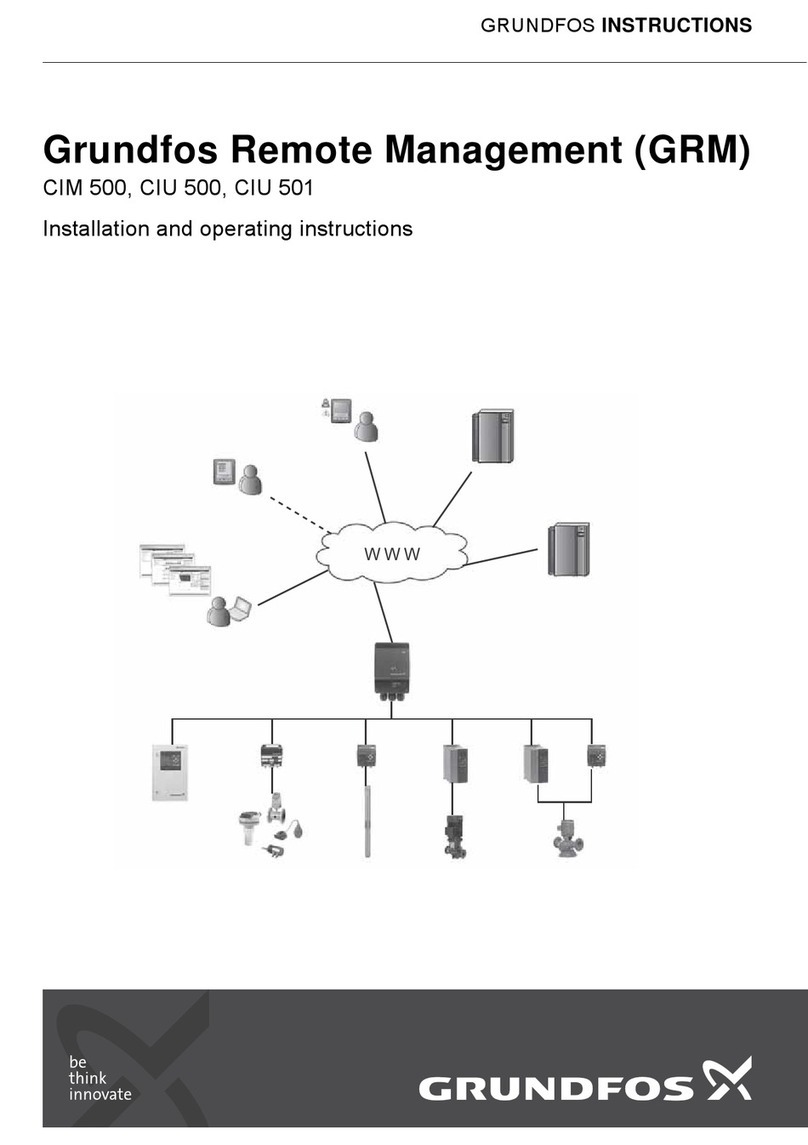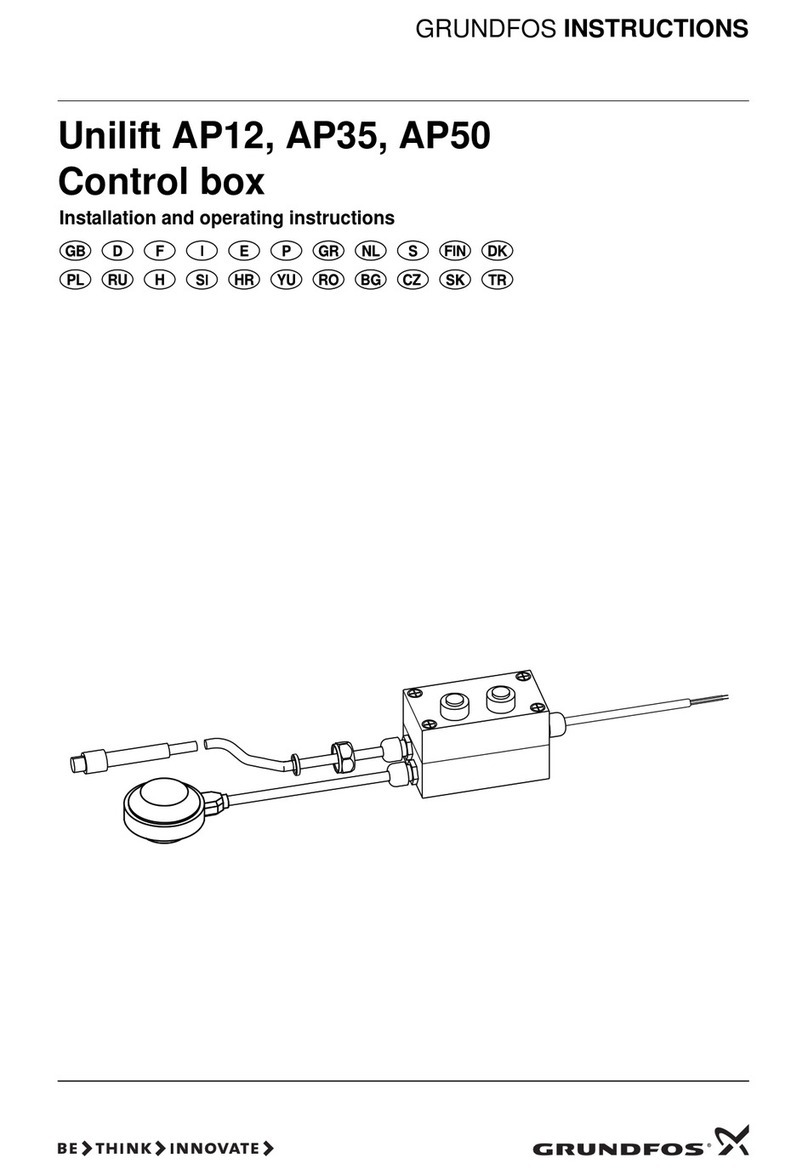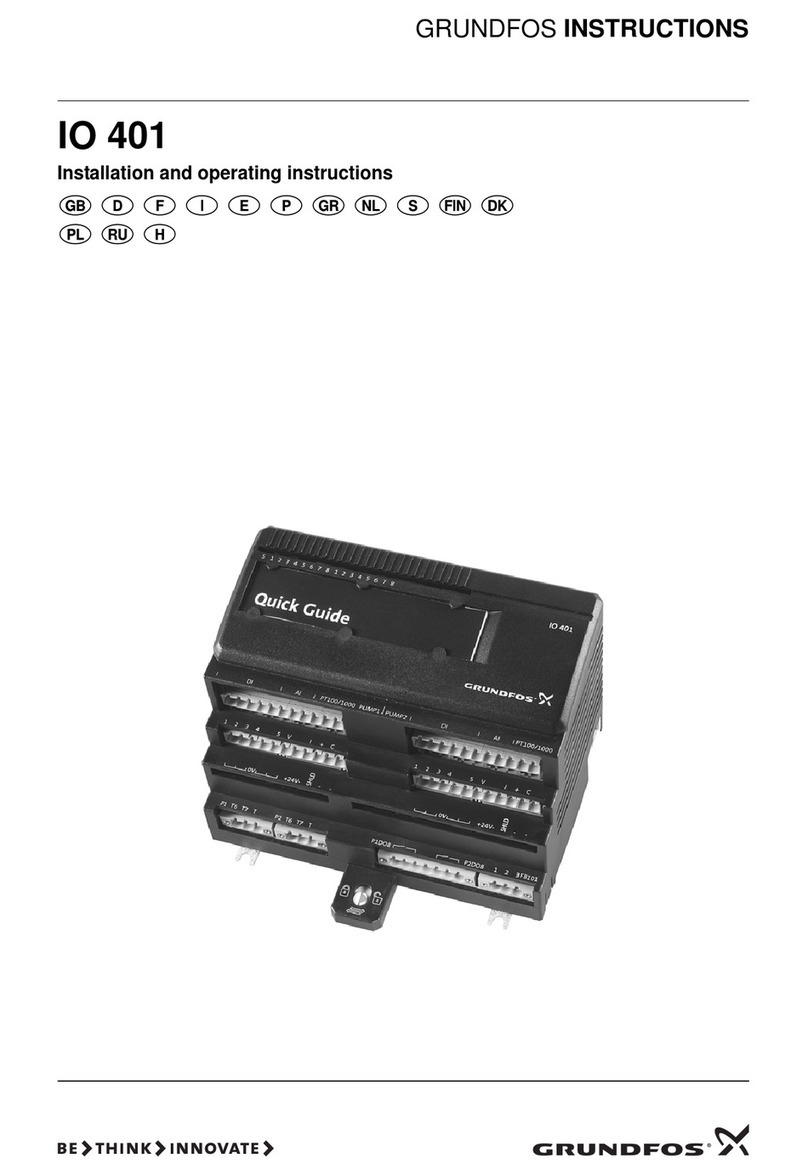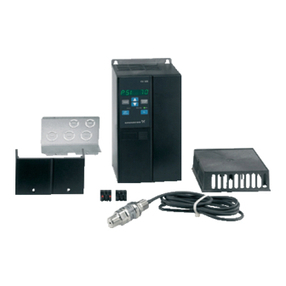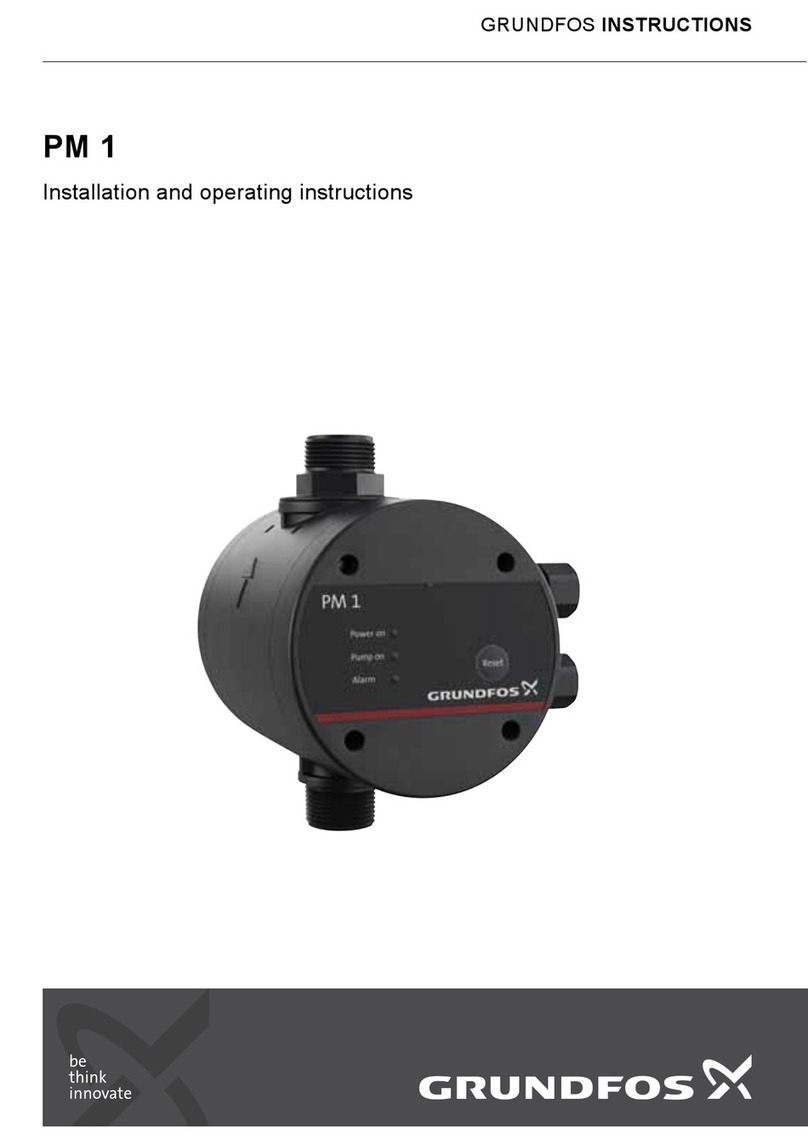8
2.6 Description of dry-running protection
When the pump sucks air, the pump power input
decreases.
If the pump power input falls below the dry-running
power limit set in the R100 display 12.4.6 Dry-run-
ning stop, the pump will stop and the CU 300 will
indicate the dry-running alarm.
2.6.1 Function
The dry-running protection applies only if the motor
speed lies within the “maximum speed” range (i.e.
maximum speed less 1,000 min-1), see fig. 5.
Normally, “maximum speed” is 10,700 min-1. How-
ever, it can be reduced in the R100 display 12.4.8
Maximum speed. The dry-running power limit set in
display 12.4.6 Dry-running stop must match the
speed.
Changing the setpoint:
If the setpoint is changed by means of the R100 dis-
play 12.1.1 Setpoint or 12.4.2 External setpoint, the
pump can be forced to run at a reduced speed in
relation to the “maximum speed”. The dry-running
protection will not protect the pump if the reduced
speed lies outside the “maximum speed” range (i.e.
maximum speed less 1,000 min-1), see fig. 5.
Constant pressure control:
In constant pressure control mode, the dry-running
protection is active, as the motor will operate at
“maximum speed” in connection with dry running.
Pump power input curve:
The curve shows the pump power input in relation to
the pump speed.
Fig. 5
2.7 Settings
In the following section, the relevant R100 displays
and settings are shown and described.
For a detailed description of the R100 displays, see
section 12. CU 300 with R100. Each individual dis-
play has a number which refers to the section in
which it is described in detail.
2.7.1 Required R100 settings
If the maximum speed of the pump has been re-
duced by more than 1,000 min-1, the dry-running
stop value must be changed. In order to change the
dry-running protection function, the following R100
settings must be made:
Setting of dry-running power limit (dry-running
stop):
1. Start the pump against a closed discharge pipe.
2. Read the input power (P1) in the R100 display
12.2.5 Power input and power consumption.
3. Calculate the dry-running power limit,
P1x 0.9 [W].
4. Set this value in the R100 display 12.4.6 Dry-run-
ning stop.
2.8 Description of the dewatering function
When the pump sucks air, the pump power input
decreases.
If the pump power input falls below the dry-running
power limit set in the R100 display 12.4.6 Dry-run-
ning stop, the pump will stop.
During dewatering, the green indicator light in the
On/Off button on the CU 300 is flashing to indicate
that the pump has stopped.
2.8.1 Applications
The dewatering function can be used in applications
where the pump often runs dry, e.g.:
• in boreholes with a low yield.
• in boreholes and building sites where the water
table should be lowered.
TM01 2689 2598
as set in display
12.4.8
Max. speed
-1,000 min-1
Motor speed
Pump
power input
Pump power curve
Dry-running
power limit set
3,000 min-1
Watt
10,700 min-1
Display R100 setting
12.4.7 Dry-running
protection
Set “Dry-running protection”
to “Active”.
Note: In certain installations,
it may be necessary to dis-
able the dry-running protec-
tion. This is done in this
display. The disabling ap-
plies to the dry-running power
limit set in display 12.4.6 Dry-
running stop.
See fig. 5.
12.4.6 Dry-running
stop Set the dry-running power
limit, i.e. dry-running stop.
See “Setting of dry-running
power limit (dry-running
stop)” below and section 13.
Technical data.
